If there were a bigger mystery, a more confrontational and controversial subject or a downright dumber story for Dirt Rider to take on than this test, please let me know. Off-road motorcycle helmets have come under more and more scrutiny lately with some much publicized accidents involving high-profile athletes' head injuries and even some deaths. Serious stuff. Complicated even further by additional press containing uneducated viewpoints and nonscientific tests based solely on safe-sounding or popular opinions. But this was not good enough for us to rest our delicate brain matter on (and in). We wanted some answers. What do the helmet tests and the st ickers that are proudly displayed (or required) on the helmet mean? How do those tests equate to the way we hit our helmets on the ground? Does the material make a difference? Does the price of a helmet matter? And what is your helmet really supposed to do?We didn't just sit at our desks and squeeze the helmets, we turned to a recognized helmet testing establishment, ACT Lab in El Segundo, California, (formerly Collision and Injury Dynamics, which did testing for Motorcyclist magazine in June 2005) and worked in conjunction with one of ACT's staff engineers on a study for a Master's Thesis in Mechanical Engineering, all just to find out how we could learn more. Currently there is no such thing as an off-road-specific helmet standard. All helmets sold in the United States must pass the DOT FMVSS 218 test if they are to be used by motorcyclists. The other popular tests you should know about are the Snell Memorial Foundation certification M2005 for some of the helmets tested and some European safety standards like ECE 22-05 and BSI 6658. There are standards specific to Japan and Australia as well. The ECE 22-05 test is different than most international standards in that it only requires a single impact per location-an approach we agree makes sense and used in our testing.An interesting fact is that most people I know (myself included) have never had a concussion while not wearing a helmet. Sounds like I'm making an argument against them, but you couldn't be further from the truth. The reason we get concussions while wearing our brain buckets is that we put them on when we do stuff that may injure us. We are hedging a bet that if and when we have an accident, our helmet will be there to protect us.There is a saying in the helmet design and testing world that goes, "Tell us how you are going to hit your head and we will build you the perfect helmet." That is a very important statement to remember through this entire article. We just never know the absolute answer to how we will crash, but we can make some educated predictions.Helmet manufacturers have many theories on how to build the safest helmet, or one that will sell. Helmet tests are varied. There becomes a delicate balance between having a helmet able to manage both a routine, lower level impact and at the same time be able to deal with the possibility of a catastrophic hit. The stiffer helmets, in both shell design and internal foam, are typically better performing at the catastrophic levels, yet at the same time tend to perform worse (not poorly, just not as well) at lower and softer hits. Conversely, helmets that have softer foam and shells do a better job at the lighter impacts but their catastrophic failure will come at lower energy levels. Sounds pretty simple, right? Not so quick. When you review the results table, you'll see that none of the helmets, in any impact test, exceeded the catastrophic magic number of 300G (the G-load transferred to the head is the measurement we used, much further explanation would take at least one week of learning high-end math). This means that one could say all the helmets passed all the tests. However, most scientists believe that lower acceleration is better, so we prefer to wear a helmet that provides the lowest Gs.Next you must consider the ways we hit our heads into the ground. Most of the time the impacts are what would fall under the very minor impact range. Since there are no large-scale studies for off-road motorcycle helmets that we could locate to determine further data, we draw heavily from our own experiences, which tend to be varied (and are not very scientific). The ASTM (American Society for Testing and Materials) Committee for sports and athletic equipment has a headgear subcommittee including a specific off-road helmet task group of which David Thom (engineer at ACT) is a member. This group has developed a protocol for off-road helmets in a quest toward an off-road standard. With further help from ACT Lab and graduate student John Prunckle, we used the ASTM Off-Road Protocol which included hitting helmets into hard-packed dirt, soft sand, a narrow metal edge, onto a tree branch and even a footpeg. There were two different velocities into dirt and sand for each helmet. Both dirt surfaces were prepped to remain consistent for each test. The helmets were hit in different locations for each test and it took two identical helmets to complete all of the impacts. All helmets were impacted in the same locations for the same hits in relation to each other. In other words, our testing was consistent and repeatable. We did have to lower our original velocity for the footpeg after it caused some catastrophic failures on initial tests. Helmets can only be asked to do so much, even when they are protecting mere test equipment.FMVSS 218 and Snell 2005 both require two impacts per site, but ECE 22-05 only hits a helmet once per site. For our tests, we did not do any double impacts, meaning the helmets were never subjected to more than one hit in any one location. Why is that? Because we feel that a helmet is disposable and can only be asked to save your head one time; we'll show and explain why later. So you should be prepared to throw away those dollars once they have saved your head one time. Money well spent.Participation in this test was voluntary and helmet brands were able to participate anonymously. That was because we wanted to learn something here so we needed a large sampling of helmets. We knew that the top-performing helmets would definitely reveal their identity, and those that were not pleased with the results could keep it under wraps. For our study the Vemar VRX-7 averaged out to be the best performing helmet of the ones we tested. There were also a few manufacturers which chose not to participate, citing concerns from legal standpoints, some had issues with our testing methods, and others felt that other companies might send "ringer" helmets. I discussed concerns with each company pointing out that there was no time to send in specially constructed helmets and that our test was consistent and repeatable. While every impact surface and velocity was released along with the invitation to send helmets, specific locations of the hits were never revealed. Sure it was in a way random, but isn't that the nature of how a helmet must perform in the real world? Or maybe helmets are built a certain way because their first priority is to meet certification standard(s), because they have to-or choose to.
The DOT standard is the only mandatory standard in the U.S. Broken down into simple English, it includes tests for shock absorption, penetration resistance and strap strength. There is no test of the chin bar whatsoever. The next, and possibly the most controversial, has been the Snell M2005 standard which includes a chin bar test and higher energy (at higher speed) tests. That is largely for two reasons, the first being the higher impacts the helmet must take and still never transmit a deceleration of over 300G. M2005 is interestingly enough changing in the very near future to the M2010 standard with different (lower) peak levels and different weights for various sized headforms, bringing it more in line with current ECE 22-05 protocol and making it possible for Snell helmets also to pass ECE tests, something that is a bit of a problem with the M2005 standard helmets. The second issue, and something that we have concern over, is the need for a double impact test on a single location, particularly a severe impact. It is a very hard test to pass, and the likelihood of an off-road helmet having to absorb a severe impact in the same location during the same crash event is very slim. Remember, your helmet is a disposable piece of safety equipment, and such a test might imply that you can use your helmet after a good impact and expect it to work a second time. In the Snell Foundation's defense, it claims the second impact is a way to test helmets to a higher standard and works in place of an even more catastrophic single hit. The second hit also makes it difficult for some materials, like some lesser quality plastics and polycarbonates, to slip through.What did we learn? The chart of the helmet impact results shows some pretty interesting findings. First, shell material is not nearly as important as the internal energy-absorbing material in most impacts. This is illustrated by the foam density samplings versus the rankings. Most all were EPS (Expanded Polystyrene), and there were some tricks and different methods going on inside a lot of these helmets to absorb impacts. Many EPS liners use multiple densities (harder = stiffer = higher density), and altering the location of the varying EPS densities makes a difference. Since a lot of these helmets are shooting to pass a well-known and established test, proper placement of foam density can be an art. But knowing that art we could have, if we had desired, also tricked or complemented the results in choosing our strike points. The impact locations we chose were not based on the known standards we have available, but were all within the areas covered by the standards.So what do all the numbers mean? Well, the most difficult thing about understanding how to protect a head is how complicated it gets. Even the experts in head injury and standard development don't have all the answers yet. Differentiating between a laboratory-style impact (straight on, to a dead stop with a rebound) and a real-world impact that involves more of a glancing hit and some degree of rotational accelerations is the first step in confusion. Our tests isolate the vertical component. The NFL has spent millions of dollars re-creating impacts in labs using footage shot from different angles and examining helmets from players who were concussed. There is a difference in the types of injuries you might sustain inside of a helmet. The most important thing you need to understand is that protecting the brain is job one, and a force the brain does not like is the rotational force and related accelerations. There is the debate between which is more important to protect from: linear acceleration and deceleration or rotational acceleration. All humans respond differently to the sudden jerk and slowing of brain matter, and placing a G-load figure on that is difficult. About the closest I could find to a study assigning a G value to a concussion was a study done for European football (soccer) where it said that 50 percent of the time an 80G impact produced a concussion. The limit placed on most motorcycle helmets is 300G because it is likely levels above that could cause catastrophic brain injury. Further confusion is introduced since a rigid laboratory headform is not at all like a real soft and fleshy human head. The test headform's job is to isolate the performance of the helmet.For the most part, it would be simple to say no matter what, lower Gs received by the head in a crash are a better thing. And for any particular crash, this is correct. But what you are asking a helmet to do is manage energy, and technically speaking each helmet has a finite ability to manage a certain amount of energy. The more catastrophic the impact is, the more energy that needs to be blown off, all in a very short space and in a very short time. Dealing with higher and higher level impacts takes a stiffer energy-absorbing material(s) and a stronger shell. Both of those things typically transmit higher Gs in a less severe impact. Just as a similarly "softer" helmet would fail sooner as the force becomes higher. It becomes an argument of lower Gs versus high level energy management. And typically the standards predict how a helmet will perform.So how hard do you hit your head when you crash at 20 mph, or when crashing over a jump? Or when you tumble in the desert at 50 mph? Or when you smack a tree in the forest? What happens when you go down in the first turn and a footpeg hits your helmet? Most of the time our crashes are no worse than falling straight to the ground from a standing position, without breaking your fall, and hitting your head. The force your helmet deals with has a lot to do with the deflection of the helmet. It has a lot to do with other parts of your body hitting the ground first and helping to break the fall. That is why some of the crazy accidents you hear about are that way. Crazy. Stories like walking away from the 60-mph get-off or, conversely, someone who doesn't wake up when tipping over at 10 mph give you a clue to the unpredictability of crashing and how your head reacts to impacts.What our test did was to isolate the vertical head impact to draw comparisons between different helmets. It was also done to see if there were variances in the way different surfaces acted on the helmets, and how different helmets compared to each other. It attempted to eliminate complications so we could make comparisons between helmet A and B.
At the end of all of this, there are a few things that we know for sure. First, and most important, is that your helmet is a disposable piece of safety equipment that must be replaced after you use it. A mild crash can compress the foam even if the shell and the internal surface of the EPS look fine, and if you were to hit it in the same or similar location again, it may not do its job. Next is fit; you must have a properly (and uniformly) snug fit so that the helmet stays on your head, in position, in the event of a crash and it should be tight so that the head can't bounce inside during a violent hit. Some speculate that up to 80 percent of riders wear a helmet that is a size too big.One more consideration you must make is price. These tests show us the price of a helmet has nothing to do with how well it will protect your head (that graphics package absorbs zero Gs), but often you can be paying for better materials, better fit and finish and for the helmet passing additional standards. No matter how much you pay, just wearing a helmet is a step in the right direction.Our chart is a starting point (at least for those companies that chose to reveal) to see how some helmets performed comparatively. The Department of Transportation publishes the results of random sample testing it does each year at the following link: http://www.nhtsa.dot.gov/cars/testing/comply/fmvss218/, and you can search out some other tests online as well but they are typically not for off-highway helmets. So you do leave a lot to trust in the standards the helmet manufacturers choose to meet. And if you don't see a helmet on our list, we have a standing offer to any helmet company that it can have this identical test performed, at its cost, at ACT Lab and we will publish the result if it chooses.In designing a helmet and when we decide to wear one, we must be ready to draw a hypothetical line in the sand and settle on what is important to us in the form of protection and where a catastrophic force lies. Because as we expect a helmet to manage higher energy levels, it must become, in a lot of ways, stiffer and therefore may not work as well in an everyday occurrence crash hit. It is the opinion of some that a mild concussion is a fine trade for protection at higher levels if you ever need that, since the overwhelming majority of mild concussions you will fully heal from. Especially if you let them heal before you do it again! But there is also a strong push for helmets that still perform well on the smaller impacts as well as more catastrophic brain injuries. In total there is strong pressure to study the need for a dirt-oriented helmet test, to see if it is needed and if it truly will differentiate from the standards already in place. Hopefully the experts will come together and agree on something that we can all benefit from. And there are a lot of improving materials, production techniques and soon to be released concepts and designs that all strive for the same thing: safer helmets.CLICK HERE TO SEE THE DIRT RIDER HELMET CHART
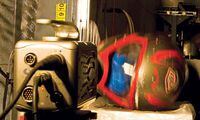
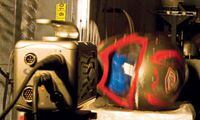

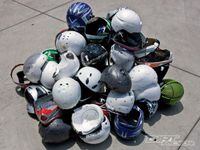
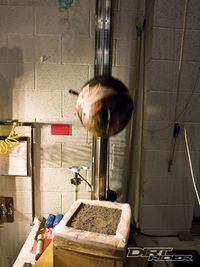
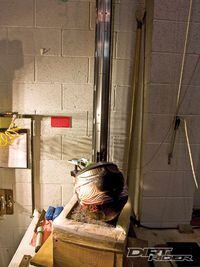
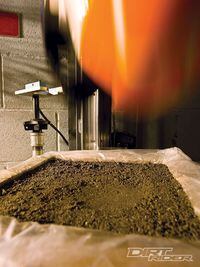
/cloudfront-us-east-1.images.arcpublishing.com/octane/T3Y7A52TXBEBJNEPGOQSVPQSPU.jpg)
/cloudfront-us-east-1.images.arcpublishing.com/octane/KY33U3WBTNFIBJFMTEF2SM7BOQ.jpg)
/cloudfront-us-east-1.images.arcpublishing.com/octane/JNPS5MGVXJC7BARVMARYQIQHXE.jpg)
/cloudfront-us-east-1.images.arcpublishing.com/octane/63N2P6SYAZDURJDO5KARQYX2J4.jpg)
/cloudfront-us-east-1.images.arcpublishing.com/octane/C72WX35SXFETTO5OVA2RWT523I.jpg)
/cloudfront-us-east-1.images.arcpublishing.com/octane/F3ER37EV2RGY5CRYFNTWE3JSF4.jpg)
/cloudfront-us-east-1.images.arcpublishing.com/octane/L65QCUR32RH2NKCUHXYHHAPDFI.jpg)
/cloudfront-us-east-1.images.arcpublishing.com/octane/VSK246VVRRDMBNQU7B2NTNY6AE.jpg)
/cloudfront-us-east-1.images.arcpublishing.com/octane/CG64RRFAYRENNAP2AA22T2LSJY.jpg)
/cloudfront-us-east-1.images.arcpublishing.com/octane/IKZSRLBWMRDORMORBXSISL4D6M.jpg)
/cloudfront-us-east-1.images.arcpublishing.com/octane/BJLVRPJSDFC3ZLPMW3LYYHMPZE.jpg)
/cloudfront-us-east-1.images.arcpublishing.com/octane/RQW2RFU4MJDYRPVFJNW362SEXU.jpg)
/cloudfront-us-east-1.images.arcpublishing.com/octane/CGQDU7HEEBBWBLF6SMXCJIW7DI.jpg)
/cloudfront-us-east-1.images.arcpublishing.com/octane/B35XXACE4ZGU5BWSEMEFUL6SN4.jpg)
/cloudfront-us-east-1.images.arcpublishing.com/octane/TDSGY4VSSRC4LP6PYXP62U236Y.jpg)
/cloudfront-us-east-1.images.arcpublishing.com/octane/4YWNAG64EZF63AQI3VL7ANERSY.jpg)
/cloudfront-us-east-1.images.arcpublishing.com/octane/QFQQG7ZZKFB5VC7C7B5PTOCJ2E.jpg)
/cloudfront-us-east-1.images.arcpublishing.com/octane/F6OD34H47ZER7KMC5RKMRWKU64.jpg)
/cloudfront-us-east-1.images.arcpublishing.com/octane/OL2BBABYPRGLLA34ONSWUVN7RQ.jpg)
/cloudfront-us-east-1.images.arcpublishing.com/octane/SKD5PT7E4RHABPEPPXAFQRPOCE.jpg)
/cloudfront-us-east-1.images.arcpublishing.com/octane/XIGZAPB55ZGTLO4QKFGTLMDHGQ.jpg)
/cloudfront-us-east-1.images.arcpublishing.com/octane/37HWZLXD45BQXJ66M6F5HCWNBI.jpg)
/cloudfront-us-east-1.images.arcpublishing.com/octane/ZX4T6QDGRVA2JIRKQGDTKD7GQY.jpg)
/cloudfront-us-east-1.images.arcpublishing.com/octane/BSZF6XDGO5FNBNRPXLO6JPFGEE.jpg)